There are perhaps only a handful of beef noodle restaurants in Taipei that are worth driving across town for, and Lao Shan Dong is one of them. The restaurant is buried in an alley behind Hsimenting's Ambassador
Unlike many watered down variations of Shandong cooking across Taipei, Lao Shan Dong has maintained its pedigree. The restaurant was founded 53 years ago by a Mr Kan, who arrived from China with a pregnant wife, spent his last bit of money to buy a few pots and pans, a sack of flour and a street stall. The restaurant is now in the second generation, but the recipes haven't changed.
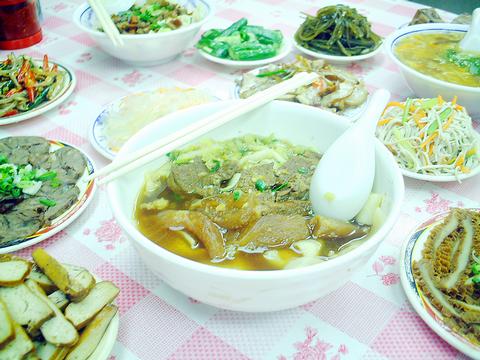
PHOTO: DAVID FRAZIER, TAIPEI TIMES
The Shandong style of noodle making, when done correctly, produces wide flour noodles with a marvelous texture. The first step is kneading the dough and rolling it out flat and relatively thin. This giant flat square is then rolled into a giant roll, but a thin coat of flour keeps the spiraling doughy rings from sticking together. Then cross-sections about 2cm wide are cut off and unraveled, forming the individual noodles.
Lao Shan Dong's beef and broth are prepared with equal care. The restaurant prefers to use Taiwan beef as it is slaughtered fresh daily, unlike imported beef, and provides a better, fresher flavor. Through more than half a century, the kitchen has also refrained from incorporating any unnatural additives or preservatives into any of the dishes.
Perhaps the most singular bowl of noodles Lao Shan Dong offers is its dry noodles in sauce
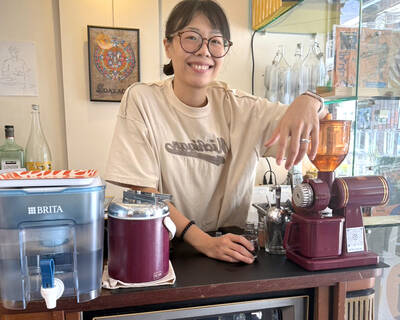
Cheng Ching-hsiang (鄭青祥) turned a small triangle of concrete jammed between two old shops into a cool little bar called 9dimension. In front of the shop, a steampunk-like structure was welded by himself to serve as a booth where he prepares cocktails. “Yancheng used to be just old people,” he says, “but now young people are coming and creating the New Yancheng.” Around the corner, Yu Hsiu-jao (饒毓琇), opened Tiny Cafe. True to its name, it is the size of a cupboard and serves cold-brewed coffee. “Small shops are so special and have personality,” she says, “people come to Yancheng to find such treasures.” She
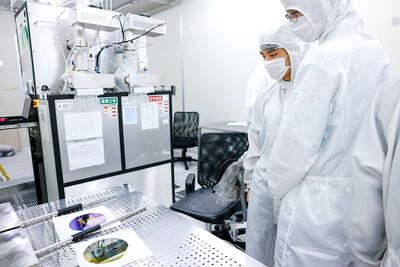
The low voter turnout for the referendum on Aug. 23 shows that many Taiwanese are apathetic about nuclear energy, but there are long-term energy stakes involved that the public needs to grasp Taiwan faces an energy trilemma: soaring AI-driven demand, pressure to cut carbon and reliance on fragile fuel imports. But the nuclear referendum on Aug. 23 showed how little this registered with voters, many of whom neither see the long game nor grasp the stakes. Volunteer referendum worker Vivian Chen (陳薇安) put it bluntly: “I’ve seen many people asking what they’re voting for when they arrive to vote. They cast their vote without even doing any research.” Imagine Taiwanese voters invited to a poker table. The bet looked simple — yes or no — yet most never showed. More than two-thirds of those
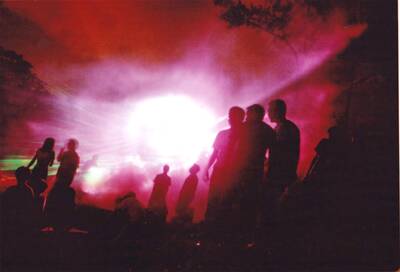
In July of 1995, a group of local DJs began posting an event flyer around Taipei. It was cheaply photocopied and nearly all in English, with a hand-drawn map on the back and, on the front, a big red hand print alongside one prominent line of text, “Finally… THE PARTY.” The map led to a remote floodplain in Taipei County (now New Taipei City) just across the Tamsui River from Taipei. The organizers got permission from no one. They just drove up in a blue Taiwanese pickup truck, set up a generator, two speakers, two turntables and a mixer. They
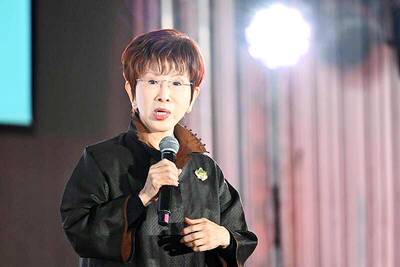
Former Chinese Nationalist Party (KMT) chairwoman Hung Hsiu-chu’s (洪秀柱) attendance at the Chinese Communist Party’s (CPP) “Chinese People’s War of Resistance Against Japanese Aggression and the World Anti-Fascist War” parade in Beijing is infuriating, embarrassing and insulting to nearly everyone in Taiwan, and Taiwan’s friends and allies. She is also ripping off bandages and pouring salt into old wounds. In the process she managed to tie both the KMT and the Democratic Progressive Party (DPP) into uncomfortable knots. The KMT continues to honor their heroic fighters, who defended China against the invading Japanese Empire, which inflicted unimaginable horrors on the